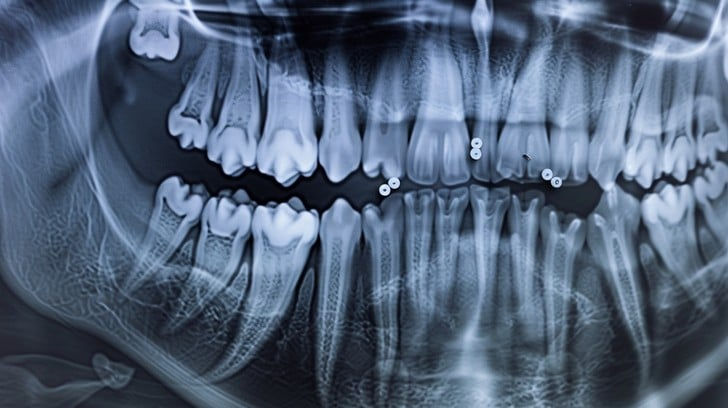What Does a Dentist Look for in a Panoramic X-Ray?
- dentalclinicdubai7
- Jul 18
- 3 min read
If you’ve ever wondered, “What does a dentist look for in a panoramic X-ray?”, you’re not alone. Dental Panoramic X-Ray In Dubai are a powerful diagnostic tool that gives dentists a wide, two-dimensional view of your entire mouth—including the teeth, jawbones, temporomandibular joints (TMJ), and surrounding structures. Unlike small intraoral X-rays that focus on individual teeth, panoramic images offer a complete picture that can reveal problems you may not even feel yet. This makes them invaluable for early detection, planning treatments, and preventing complications.
Detecting Tooth and Jaw Abnormalities:
The first thing a dentist examines in a panoramic X-ray is the alignment and condition of your teeth and jaws. This includes checking for any structural abnormalities or emerging dental issues. A panoramic X-ray can reveal:
Impacted teeth, such as wisdom teeth that haven’t erupted
Tooth crowding or poor alignment that may require orthodontics
Missing, extra, or malformed teeth
Jaw alignment issues that affect bite and speech
Tooth development in children and teens
By examining the layout of your mouth as a whole, dentists can spot potential problems early and recommend corrective steps before issues escalate.
Identifying Bone and Joint Problems:
A panoramic X-ray allows dentists to assess the condition of your jawbones and temporomandibular joints (TMJ). These structures are crucial for chewing, speaking, and overall facial support. Dentists may use the scan to look for:
Signs of bone loss, often due to gum disease or missing teeth
Jaw fractures or trauma, especially after accidents or sports injuries
TMJ disorders, such as joint degeneration or misalignment
Cysts or tumors within the jawbone
Bone density, which may impact dental implant success
These assessments help dentists make decisions about restorative procedures, oral surgery, or referrals to specialists like oral surgeons or orthodontists.
Evaluating Sinuses and Other Structures:
Panoramic dental X-rays also capture parts of the sinus cavities, which are located above your upper jaw. These sinuses can affect oral health more than you might think. Dentists may check for:
Sinus congestion or infection that contributes to tooth pain
Sinus involvement in upper jaw problems, especially near molars
Bone invasion by cysts or tumors from nearby areas
Surgical planning concerns, especially for implants or extractions
In cases where patients complain of facial pain or pressure, this broader image helps rule out non-dental causes or pinpoint hidden sources of discomfort.
Spotting Signs of Infection or Disease:
Another key reason dentists rely on panoramic X-rays is to detect early signs of infection or disease. These may not be visible during a visual exam or even with intraoral X-rays. Panoramic images can help uncover:
Dental abscesses or infected tooth roots
Periodontal disease progression into the bone
Cysts or benign growths in the jaw
Potential malignancies, including oral cancers
Foreign objects or abnormalities from prior surgeries
Early detection is critical in managing oral infections and preventing them from spreading to other areas of the body.
Preparing for Orthodontic or Surgical Treatments:
Dental Panoramic X-Ray are essential tools for treatment planning in both orthodontic care and oral surgery. Before placing braces, extracting teeth, or inserting implants, your dentist needs to assess:
Root positioning and spacing between teeth
Jaw growth patterns in children and adolescents
Wisdom tooth proximity to nerves and other teeth
Bone thickness and quality for implant placement
Surgical access points and potential complications
This comprehensive view ensures that procedures are carried out safely and successfully, with fewer surprises during treatment.
Final Thoughts: A Complete Picture of Your Oral Health
So, what does a dentist look for in a panoramic X-ray? Almost everything. From assessing tooth alignment and bone structure to detecting hidden infections and planning surgeries, this imaging tool plays a vital role in modern dental care. The panoramic view helps dentists make more informed decisions, catch problems early, and offer more accurate and effective treatments.
If your dentist recommends a panoramic X-ray, know that it’s not just routine—it’s a proactive step toward protecting your overall oral health. It's fast, noninvasive, and highly informative, giving your care provider the full story behind your smile.









Comments